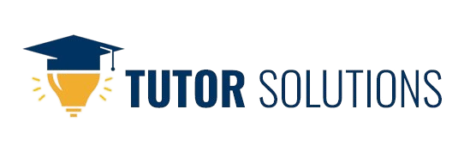Is the American Curriculum Failing Our Students? Here’s How We Can Fix It
A major factor in opportunity and social mobility, the American educational system is coming under increasing scrutiny. The efficiency of the American curriculum in educating pupils for the twenty-first century is a subject of great concern. Even though the system has created many successful people, graduation rates frequently give rise to concerns.
According to Brookings, among students aged between 18 and 24, the percentage of high school graduates has risen from 85% to 95% since early 2001. The graduation rate among black and Hispanic students is lower than that of white students, a figure that conceals more significant differences. Beyond graduation rates, there are still unanswered concerns regarding kids’ readiness for either college or the workforce.
So, are our pupils not succeeding in the American curriculum? The solution is intricate. The current situation is the result of a combination of causes rather than a single perpetrator.
Getting Around the American Curriculum’s Challenges
With its numerous advantages, the American educational system has a number of difficulties that affect the standard of instruction for children all over the country. These obstacles, which range from unfair resource distribution to standardized testing, have a significant impact on the nature of learning.
Overuse of Standardized Testing
The overuse of standardized testing in the American curriculum constitutes one of its main problems. Although tests are a necessary tool for tracking students’ academic development, a heavy reliance on them can inhibit critical thinking and innovation. Studies, like the one published in the Harvard Business Review in 2019, show that putting too much focus on assessment does not always translate into enhanced learning outcomes. Rather, it frequently promotes rote memory over profound comprehension.
Absence of Personalized Instruction
Every learner has different requirements, learning methods, and rates. Nevertheless, the existing system finds it difficult to efficiently handle this variety. Underserved students might include individuals with exceptional needs or those who perform better than expected in the curriculum. Personalized learning experiences that may better assist each student’s progress are limited by the one-size-fits-all approach.
Relevance Gap
There’s a rising concern that the curriculum isn’t keeping up with the fast-changing world of today. Some contend that conventional disciplines have little practical value, despite the fact that the abilities needed to succeed in the workforce are changing. It is essential to close this relevance gap in order to provide students with the information and abilities they need to prosper in a changing society.
Inequity and Socioeconomic Disparities
The disparity in opportunities and resources among schools is perhaps one of the most urgent issues. Due to funding differences between wealthy and low-income regions, educational institutions in underprivileged areas frequently have smaller class sizes, fewer resources, and fewer qualified teachers. This creates an unfair playing field. These differences exacerbate already-existing socioeconomic inequality by maintaining attainment gaps and impeding social mobility.
It needs a comprehensive strategy that puts equality, creativity, and flexibility first to address these issues. We may strive toward a more inclusive and successful education system for all kids by reevaluating the function of standardized testing, adopting individualized learning practices, upgrading curriculum to match real-world demands, and tackling systemic injustices.
Rethinking the American Curriculum:
Despite the difficulties, there is cause for hope. Creative educators and legislators are putting forth suggestions for improving the American curriculum. Here are some suggestions:
- Eschewing the use of standardized testing as the exclusive indicator of achievement. Rather, put a focus on the growth of critical thinking, teamwork, communication, and creativity—skills necessary for surviving in the contemporary world.
- Including students in practical assignments that let them use what they’ve learned to solve real-world issues. This stimulates critical thinking, cooperation, and a better understanding.
- Using technology to tailor instruction, accommodate a range of learning preferences, and simplify difficult topics is known as technology integration.
- Including social-emotional learning (SEL) in the curriculum gives children the skills they need to control their emotions, form wholesome relationships, and make moral judgments. Strong social-emotional abilities have been linked to both academic achievement and general well-being, according to studies.
- Creating a curriculum that takes into account many cultural viewpoints and represents the variety of American society is known as culturally responsive education. Students can see themselves mirrored in the course materials and thus promote inclusion.
The Path Ahead:
It’s not easy to revamp the American curriculum. Collaboration between educators, legislators, parents, and the community is necessary. It is imperative that schools receive more financing, especially in underprivileged communities. In order to keep current with best practices and incorporate novel teaching strategies, educators must have access to chances for continuous professional development.
The Tuition Highway provides a route ahead in overcoming the obstacles of the American Curriculum. Tuition Highway enables students to achieve academic achievement and cultivate the necessary skills for success in the twenty-first century by offering customized online tuition services. We can rethink education together and build a better future for all.



